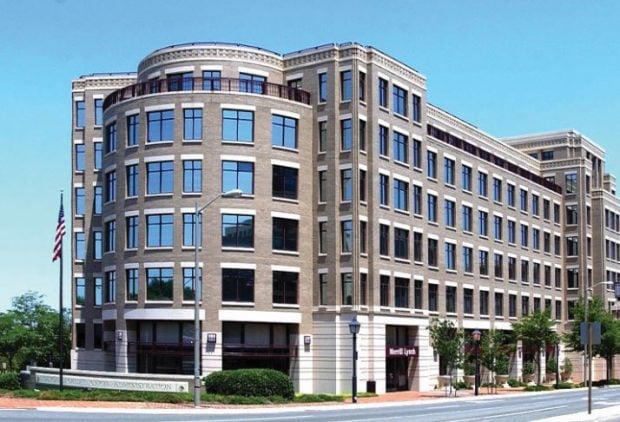Central Liquidity Facility. It sounds like a conveniently located swimming pool for bureaucrats.
It is not that, but what it is is misunderstood–even inside the credit union industry–and right now a debate is starting about the CLF's role as the industry restructures.
On one side is Chip Filson, now president of credit union consulting firm Callahan & Associates but a couple decades ago the president of the CLF while also serving as director of the office of examinations at NCUA. Filson's contention is that, with significant restructuring, the CLF could emerge as a potent force in the industry.
Recommended For You
But then there are other perspectives. Credit union consultant Marvin Umholtz, for instance, said, "It would be better to shut it down than to try to redirect it. The CLF is an institution more appropriate to the 1980s than the 2010s."
Big money is at stake in this debate: some $1.7 billion is on hand at the CLF and the question is, who owns it?
Actually, who owns it is easy. Credit unions put the money in and so it is theirs.
As for who runs the CLF, that too is easy. It is managed by NCUA, which appoints CLF's management.
But then the CLF story gets tangled and complicated.
To start at the beginning, Filson explained where the money originated. "These funds are the CLF's primary capital base and belong to credit unions. They are the one-quarter of 1% that credit unions sent to their corporate as an 'agent member' when each credit union subscribed to its corporate's membership capital shares.
Each corporate, in turn, sent an equivalent amount to U.S. Central. As the 'group agent,' U.S. Central subscribed to the required capital stock and gave all credit unions access to the CLF. This capital stock is redeemable upon demand by the members," Filson recently wrote in an article posted at the Callahan & Associates website.
Then the plot turns ugly. At the height of the financial crisis, as U.S. Central, WesCorp and other corporates began to implode, where was the CLF? Missing in action, said Filson. "Despite repeated requests by both corporate and natural person credit unions, the CLF refused to loan."
The CLF, through its management at the NCUA, vigorously disputed Filson's recounting of that history. In an email, David W. Small, assistant director of public affairs at NCUA, wrote: "During the recent financial crisis, the Central Liquidity Facility was an instrumental part of NCUA's effort to stabilize liquidity and confidence in the credit union system, especially corporate credit unions. CLF began to fund liquidity loans Sept. 4, 2008 made by corporate CUs to relieve liquidity pressures on the corporate system. Seventeen days after the Lehman Brother's collapse (Sept. 15, 2008), which was arguably at the height of instability in the crisis, the Central Liquidity Facility had already approved and funded $1.26 billion in liquidity-need loans to natural person credit unions. By year-end 2008, CLF had approximately $1.6 billion in liquidity-need loans to the natural person credit unions outstanding."
Small concluded: CLF "remains ready and able to meet the liquidity needs of the CU system when unusual, unexpected or extreme events occur."
Maybe so, suggested Filson in an interview, but he nonetheless believes that the CLF's role in the crisis was unhelpful to the point where it needs massive restructuring. "What is needed at the CLF is institutional reform. Federal Home Loan Banks are owned by banks, and so the CLF is owned by credit unions. That is where reform has to start."
Right now, many corporates are scrambling for capital to permit them to stay in business, and a key question from Filson is why not put some of the CLF funds to use in this capacity? "The corporates are trying to meet new capital standards, so where does this $1.7 billion come in? The CLF wants to hold onto the funds so it can stay in business, despite the fact that it has no loans."
How to fix this? Filson's proposal is to change control of CLF. "Credit unions must become part of the governance structure similar to the FHLB's boards. At the moment, CLF is just an arm of regulatory control."
Filson wants to boot NCUA out of its role at CLF. The solution, suggested Filson, is to put credit unions in charge of CLF and that, he said, would be a big step in helping create a stable corporate system that serves natural person credit unions.
But maybe there is a third direction. Umholtz, in particular, sees a different solution. "The CLF is just another opportunity for the industry to shoot itself in the foot. The industry does not need this 'mini-Fed' when we have the Fed."
His key point is that going to external markets to meet liquidity needs forces discipline on the credit union industry when it seeks to borrow, and this discipline, he suggested, will be needed when the industry faces its next round of challenges.
"The CLF could go dormant. That is what should happen," Umholtz added.
Exactly what will happen to the CLF? Nobody knows. But Umholtz does have an idea about how to move the debate to a new level. "A credit union with capital in the CLF should attempt to withdraw it. That would force the issue," he said.
Then what would happen? Nobody is commenting on the record, and off the record nobody seems to know either. But, said Umholtz, "we would know more about the CLF just by how it handled that request."
© 2025 ALM Global, LLC, All Rights Reserved. Request academic re-use from www.copyright.com. All other uses, submit a request to [email protected]. For more information visit Asset & Logo Licensing.







